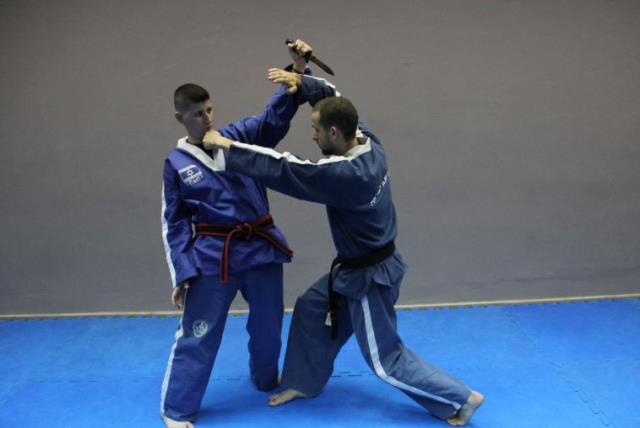How Often Are Guns Used in Self Defense?
The number of times guns are used in self defense is a topic of much debate.
While the mainstream media typically reports that guns are used in criminal activities many times more than they are used in self-defense, this is not supported by facts. The table below lists statistics for defensive gun use (DGU) compiled by Gary Kleck and Marc Gertz.
Kleck has testified before Congress that based on his research, there were 2.1 to 2.5 million DGUs annually, while only 300 thousand violent crimes involved the “use or threatened use of a firearm”^(GVA).
The number of times guns are used in self-defense every year is staggering. According to Department of Justice studies between 1987-1992, over 1 million people per year defended themselves with a firearm away from home ^(GV).
Further, the vast majority of these DGUs were never even reported to the police. On top of this, victims who use guns defensively are less likely to be injured than those who do not resist at all ^(GV).
Gun advocates often use the argument that guns are used in self defense more often than they are used to commit crimes.
However, very few studies have been done. This is because people often do not report whether they used a gun to defend themselves ^(GV).
In order for us to gain a better understanding of the number of times guns are used in self-defense and by whom, we need both sides of the issue to be open and honest about their research methods and findings. Further research needs to be done on this topic so that we can develop a comprehensive picture of DGUs and crimes committed with firearms.
Gun control advocates argue that the number of times guns are used in self defense is negligible compared to the number of times they are used to commit crimes.
This is supported by research done by the Violence Policy Center, which shows that for every justifiable homicide in the United States involving a gun, guns were used to murder 32 people ^(GV). GVA.
Department of Justice studies between 1987-1992 found that only 13% of all violent acts involved a firearm and 8% of victims resisted with a firearm away from home ^(GV). These statistics show that criminals are more likely to use or threaten an individual with a gun, whereas victims typically resist by other methods. It’s also important to note that while some people may report their DGU as a crime to authorities, others may not report it at all due to embarrassment or fear of reprisal from the criminal.
In order for both sides of the argument to be made based on facts, not just opinion, further research needs to be done into DGUs.
The truth is that nobody really knows how often guns are used in self defense.
While some claim that guns are used in criminal activities more often than they are used in self-defense, others suggest just the opposite.
The only way to get closer to the truth is for both sides of the argument to work together and conduct comprehensive studies on this topic so we can gain a more accurate picture of firearms usage.
However, there are several studies that provide some insight into the matter.
A study by Gary Kleck and Marc Gertz found that there were between 2.1 and 2.5 million DGUs annually ^(GV).
However, these numbers may be low due to the fact that some people don’t report their DGU as a crime to the authorities, while others don’t even report it at all due to embarrassment or fear of reprisal from the criminal.
The Department of Justice did several studies which show that less than 1% of victims resist with a firearm away from home ^(GV). These statistics show that criminals are more likely to use guns against an individual than victims are to resist with a gun. It’s also important to note that not all crimes involve firearms and some individuals may report their DGU as a crime to the authorities, while others may not report it at all due to embarrassment or fear of reprisal from the criminal.
In order for both sides of the argument to be made based on facts and not just opinion, research needs to be done into DGUs to gain a more accurate picture of self-defense firearms usage.
Ultimately, the answer to this question depends on who you ask and their personal biases.
The truth depends on who you ask and what research they base their answers on.
If you were to ask the gun rights lobby how often guns are used in self-defense, they would probably tell you that it happens very frequently ^(GV).
However, gun control advocates would argue that the number of times guns are used for self-defense is negligible compared to the number of times they’re used to commit crimes. One study by Gary Kleck and Marc Gertz suggests that there are between 2.1 and 2.5 million DGUs annually ^(GV), while another study looking at Department of Justice statistics shows that less than 1% of victims resist with a firearm away from home ^(GV). These numbers show that both sides of the argument are making claims based on speculation.
It’s important to note that not all crimes involve firearms and some individuals may report their DGU as a crime, while others may not report it at all due to embarrassment or fear of reprisal.
The only way for both sides of the argument to be made with facts rather than opinion is through comprehensive research into DGUs in order to get an accurate picture. Hopefully, this will provide insight into how often guns are used in self-defense versus being used for criminal activity.

